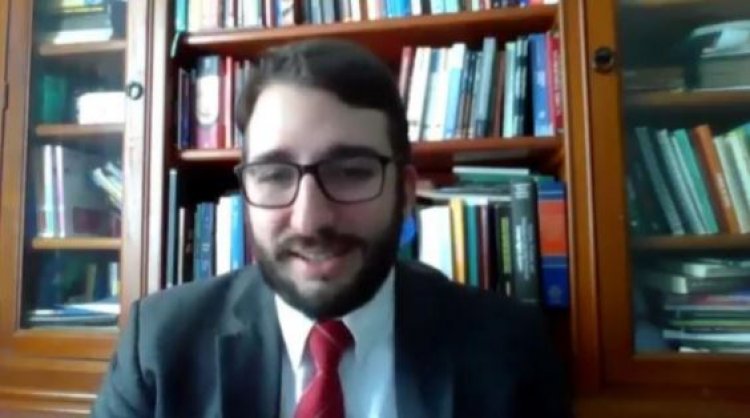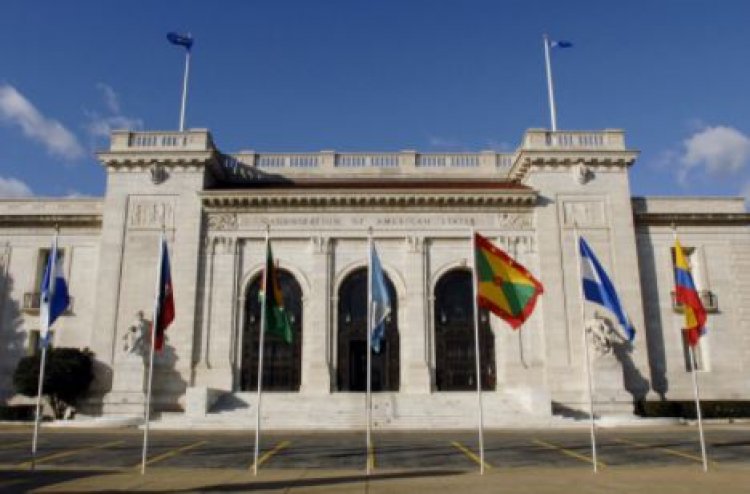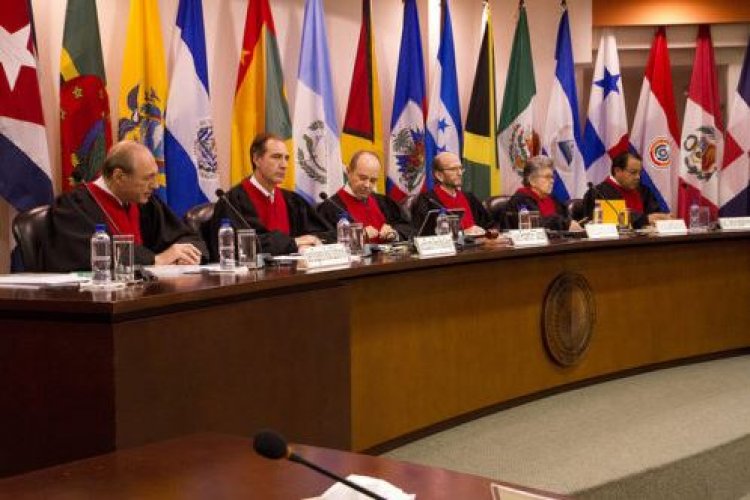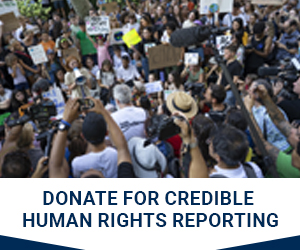GHRD Interview with Brazilian expert about the Inter-American system of human rights

Prof. Siddharta is a professor of Constitutional Law and Human Rights at the Federal University of Rio de Janeiro (UFRJ), a visiting professor of the Postgraduate research center of the Fluminense Federal University (UFF) and coordinator of the Inter-American center of the Federal University of Rio de Janeiro (UFRJ). He holds a Phd on International Law from the Rio de Janeiro State University (UERJ), a Master’s degree on Constitutional Law and an LLB on Law studies from the Fluminense Federal University. Prof. Siddharta also works as a lawyer in Brazil.
On May 10, 2021, the ‘International Justice and Human Rights’ team members, Thaís Ferreira and João Victor Stuart, received Prof. Siddharta Legale (Professor of Constitutional Law and Human Rights at the Federal University of Rio de Janeiro) for a discussion on the Inter-American system of Human Rights protection. The GHRD’s members engaged in an interesting conversation with the Brazilian professor about one of the most important regional systems of human rights protection in the world. The Inter-American Organization was founded in 1948 along with the creation of the American Declaration of Human Rights and the Charter of the American States (Sistema Interamericano de Proteção – Secretaria da Justiça e Cidadania, 2021).
In 1969, the member States of the Inter-American Organization elaborated the Inter-American Convention on Human Rights, mostly known as the San Jose agreement. This is the main binding instrument of the system whose aim is to consolidate an international legal protection of human rights in the American States (Sistema Interamericano de Proteção – Secretaria da Justiça e Cidadania, 2021).
As of today, the States that have ratified the American Convention on Human Rights are: Argentina, Barbados, Bolivia, Brazil, Chile, Colombia, Costa Rica, Dominica, Dominican Republic, Ecuador, El Salvador, Grenada, Guatemala, Haiti, Honduras, Jamaica, Mexico, Nicaragua, Panama, Paraguay, Peru, Suriname, and Uruguay. (Which States Are Part of the American Convention, 2021)
The Inter-American System established two institutions to fulfil its mandate. The first one, the Inter-American Commission of Human Rights, was established in 1960 and its headquarters are based in Washington D.C, USA. The Commission is responsible for monitoring the respect of the Inter-American Convention on human rights in the member States, making recommendations and issuing adequate measures for the member States to halt human rights violations and examining denounces of violations of the Convention in the signatory States (Sistema Interamericano de Proteção – Secretaria da Justiça e Cidadania, 2021).

Headquarters of the IACHR in Washington D.C – Source -rimestream –https://primestream.com/casestudy/broadcast/oas/
The second one, the Inter-American Court of Human Rights, was established in San José, the Capital of Costa Rica in 1979 (History of the Inter-American Court, 2021). The Court resolves contentious cases and supervises judgments, while at the same time, it exercises an advisory function, in which it provides interpretation and explanations about human rights concerns and legal debates related to the American Convention (What Is the Inter-American Court of Human Rights and What Are Its Responsibilities? 2021). Lastly, the Court can also order provisional measures to avoid irreparable damage to people, in cases of extreme gravity and urgency (What Are Provisional Measures of the Court ?, 2021).

Judges of the Inter-American Court – Source – International Justice Resource Center: https://ijrcenter.org/2016/10/26/inter-american-court-advisory-opinion-analyzes-rights-of-legal-entities/
How does it work for someone to communicate a human rights violation to the Inter-American System? Can also people submit a complaint before the system? Or is it something exclusive for States? Which is the organ responsible for receiving these complaints? How can social and civic organizations bring the demands of marginalized and vulnerable communities into the Inter-American System?
To report a violation of human rights in the Inter-American System, firstly, it is necessary to adhere to the requirements of article 46 of the American Convention, which are: (i) exhaustion of domestic remedies, which means that the petitioner has to report the violation firstly to the domestic system; (ii) a time break of at least six months from the final domestic decision, and (iii) inexistence of other international process. This last point means that the petitioner must not choose another system of human rights protection in addition to the Inter-American, such as the UN protection system, for example. Such denunciation must be forwarded to the Inter-American Commission on Human Rights, by any natural person or legal person recognized in at least one of the member states’ jurisdiction.
Social movements, for example, may join with NGOs, such as Global Justice, or Human Rights Clinics, such as the Inter-American Human Rights Clinic at UFRJ, to bring complaints of violations of vulnerable groups to the IACHR.
Which kind of remedies and redressing mechanisms are offered by the Inter-American System ?
This is a very important question. There are mainly two types of reparations: the pecuniary, when the Inter-American court condemns states to pay money to the victims of human rights violations, and non-pecuniary, when the Court demands that states create new public policies as a way to redress the victims. The non-pecuniary reparations are more difficult than simply paying the victims.
Non-pecuniary reparations are described by article 63 of the Convention as a justice reparation, but providing justice through a decision is hard so that the states must make additional efforts in designing public policies that can give this sense of justice to the victims, such as educational measures, or medical and psychological treatments for surviving victims and their families. The high level of violence and inequality in Latin-America makes this second model of reparation more necessary in the continent, but also more challenging. For this reason, the Inter-American Court became such a relevant agent of transformation of Latin-American context.
How do you assess the impact that the Inter-American system has been creating in the Latin-American Continent?
According to my Phd thesis, the Inter-American system, based on the work of both the Inter-American Commission and the Inter-American Court of Human Rights, has reconfigured the understanding of human rights throughout America, with its decisions cited, for better or worse, by a large part of the Constitutional Courts.
I also highlight four major changes in the Americas motivated by the jurisprudence of the Inter-American Court: the cycle of Honduran cases strengthened the necessity of the local government to combat the cycle of forced disappearances of people by reforming domestic policies that favoured this crime. The Peruvian case cycle has unravelled the peculiarities of access to inter-American justice by clarifying states’ obligations to secure the right to a fair trial (Art. 8-American Convention on Human Rights) and the right to judicial protection (Art 8-25). The Colombian case cycle established parameters against massacres and internal armed conflicts and also reinforced internal protections to minorities and vulnerable groups, such as children and women. Finally, the cycle of Brazilian cases gave greater measures to vulnerable groups, such as persons deprived of their liberty, and provided more appropriate human rights standards regarding prisoners’ rights.
When it comes to Brazil, how do you assess the influence and impact of the decisions of the Inter-American Court and Commission over the jurisprudence?
Regarding the Inter-American Court’s influence in the Brazilian jurisprudence, we have both advancements and setbacks. Until 2004, the Brazilian Supreme Court had never mentioned any decision of the Inter-American Court, but after this year, it began to mention the Court’s decision, but not always saying that Brazil would follow them.
However, as I said, there is a cycle of Brazilian cases aimed at vulnerable groups. The decisions of the Inter-American Court and the Commission have great influence, either directly or indirectly, in the protection of these groups in Brazilian territory. An example of this can be found in the Commission’s decision on the Maria da Penha case, which ended up propelling the Maria da Penha Law against various forms of domestic violence. Another example, this time related to the jurisdiction of the Inter-American Court, concerns the case of Urso Branco Prison which reduced the overcrowded and human-degrading conditions of the prison by building another one.
Why have Canada and the USA not ratified the Inter-American Convention on Human Rights yet?
These are two different situations: Canada has not signed the American Convention on Human rights. The United States of America signed it, but has not ratified it yet. Both decisions carry out political motivations, but we need to examine each one of them separately. This weakens the scope of human rights in our region, and, above all, weakens the jurisdictional impact of the Inter-American Court of Human Rights.
Canada gave an official answer for not having signed nor ratifying the Convention in three major topics. It highlighted the little impact from the ratification of the American Convention on Canadians, on account of its own Charter of Rights and Freedoms. Basically, this internal instrument would be enough to secure the protection of Canadians’ human rights, which I do not agree with; this is a political reason. Canada also flagged that ratifying the Convention would bring the jurisdiction of the Court to Canada. Here, there is an important debate over the international law clause “Raul Fernandes”, which says that no country is obliged to accept the jurisdiction of an international tribunal, but if they do, they must not disrespect the decisions of this Court. There was a specific commission to study the possibilities of adherence to ACHR by Canada, however, for reasons of domestic policy, the government preferred not to sign and ratify the treaty.
The USA, for its part, does not offer any official justification for its non-ratification of the ACHR, despite having signed the treaty on January 6, 1977, at the beginning of Jimmy Carter’s government. Personally, I do not understand that because the Inter-American Commission is based in the USA’s capital. I think this involves some level of prejudice, once that the USA would not accept the jurisdiction of a Court that is based in Latin America.
Despite the tendency that more and more American countries are adhering to the ACHR and to the jurisdiction of the Inter-American Court, as has been happening in recent decades, it is unlikely that both Canada and the USA will ratify the ACHR in the coming years.
References
History of the Inter-American Court. (2021). Inter-American Court of Human Rights. https://www.corteidh.or.cr/historia.cfm?lang=en.
Sistema Interamericano de Proteção – Secretaria da Justiça e Cidadania. (2021). Justice and Citizenship. https://justica.sp.gov.br/index.php/observatorios/direitos-humanos/sistema-interamericano-de-protecao/#:%7E:text=O%20Sistema%20Interamericano%20teve%20in%C3%ADcio,dos%20Estados%20Americanos%20(OEA)
What are provisional measures of the Court ? (2021). Inter-American Court of Human Rights. https://www.corteidh.or.cr/que_son_medidas_provisionales.cfm?lang=en
What is the Inter-American Court of Human Rights and What are its responsibilities? (2021). Inter-American Court of Human Rights. https://www.corteidh.or.cr/que_es_la_corte.cfm?lang=en
Which States are part of the American Convention. (2021). Inter-American Court of Human Rights. https://www.corteidh.or.cr/que_es_la_corte.cfm?lang=en

































